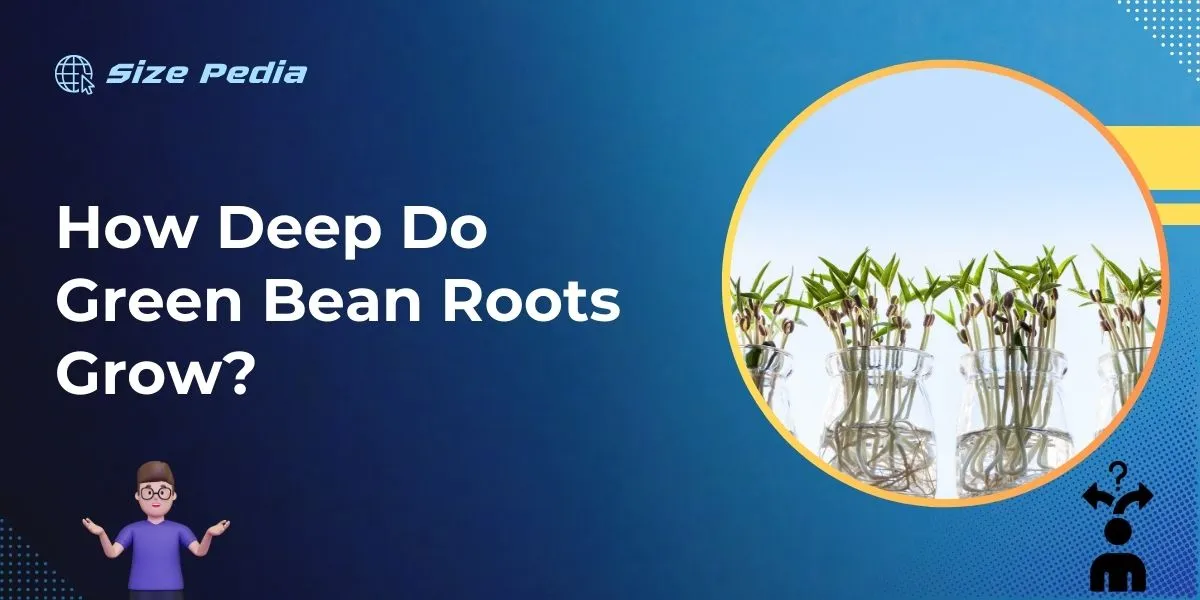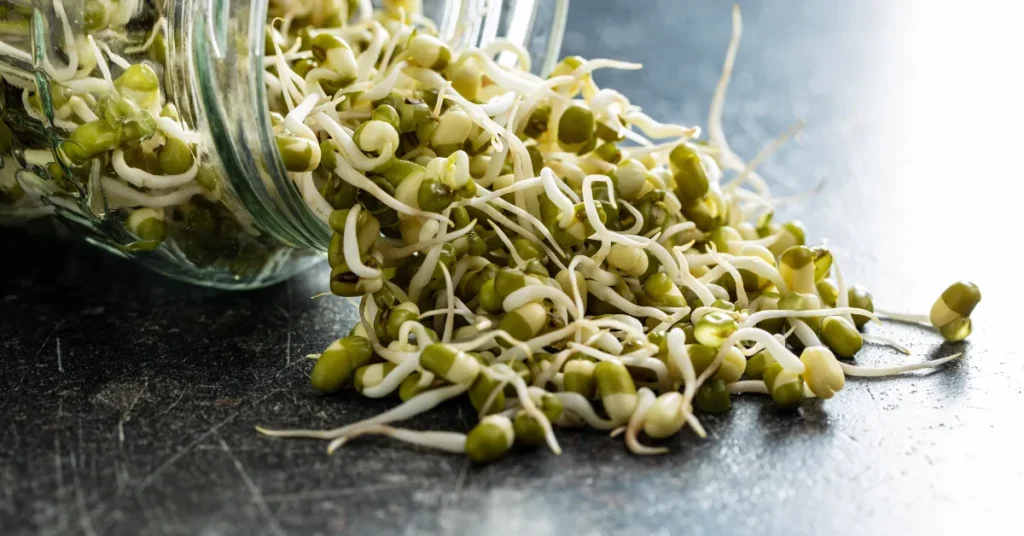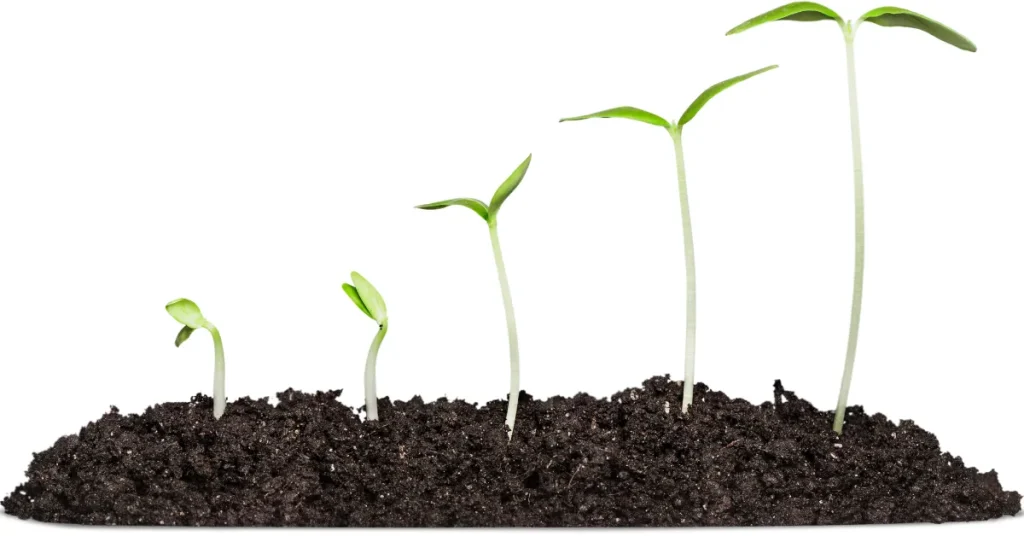Green bean roots typically grow about 18 to 24 inches deep. They spread outwards up to 2 feet.
Green beans are a popular vegetable, recognized for their crisp pods and the ease with which they can be grown in a variety of climates. Their root system’s depth allows them to access nutrients and water from the soil efficiently.
Gardeners often appreciate how their moderate root depth makes them well-suited for raised bed gardens and containers. Understanding the rooting depth of green beans is essential for optimal plant spacing and irrigation planning, ensuring healthy growth and an abundant harvest.
This knowledge helps avoid overcrowding and competition for resources, which can affect yields. Proper soil preparation, ensuring it’s loose and well-drained, plays a significant role in supporting the full development of green bean roots.

The Secret Life Of Green Bean Roots
Welcome to the hidden world beneath our feet, where the unassuming green bean plants keep their secrets well buried.
Here we unearth the secret life of green bean roots, delving into a fascinating underground journey full of life, vigor, and surprise twists that sustain the delightful veggies above.
Optimal Soil Conditions For Growth
For green beans to thrive, their roots require certain soil conditions to unlock their full potential:
- Soil Texture: Loose and well-draining soil helps roots spread easily.
- Moisture Balance: Consistent water supply, without stagnating, ensures healthy roots.
- pH Levels: A pH range of 6.0 to 7.0 suits green bean roots best.
- Nutrient Content: Fertile soil enriched with organic matter feeds the roots.
Root System Characteristics
Green bean roots possess unique traits that allow them to support the plant robustly:
| Root Type | Depth | Functions |
| Primary Root | Deep | Stabilizes and absorbs deep nutrients |
| Secondary Roots | Shallow | Spreads wide to gather water and nutrients near the surface |
Under optimal conditions, green bean root systems can dive up to 36 inches deep while also spreading horizontally to create a vast network.
This dual approach balances the plant’s need for surface water against the quest for nutrients buried deep in the soil.
Growth Patterns And Depths Explored

Understanding the root system of green beans is crucial for gardeners. These roots support the plant’s growth and health. Let’s dive into the intricacies of green bean root systems.
Typical Root Growth In Ideal Conditions
Green beans, known scientifically as Phaseolus vulgaris, exhibit a fibrous root system. This system spreads just beneath the soil surface. In ideal conditions, these roots can grow:
- 18 to 24 inches horizontally from the base of the plant.
- Downward up to 36 inches.
This spread allows green beans to access moisture and nutrients efficiently. Proper soil, water, and care enable optimal root development.
Factors Influencing Root Depth
Several factors affect how deep green bean roots grow:
| Factor | Effect on Root Depth |
| Soil Type | Loamy soil promotes deeper growth. |
| Water Availability | Roots reach deeper with consistent moisture. |
| Nutrient Levels | Poor nutrients may limit root extension. |
| Plant Spacing | Adequate space encourages wider growth. |
A balanced interplay of these factors ensures healthy root systems for green beans. Careful garden management tailors to these needs.
Caring For Green Bean Plants
Caring for green bean plants requires understanding their basic needs. Proper care leads to healthy, productive plants. The root depth of green beans influences their care routine.
Watering Requirements
To ensure the optimal growth of green beans, consistent watering is vital. Roots can grow deep, so they need sufficient water to thrive. Aim for soil that is moist, not soggy.
- Water green beans with 1 inch of water weekly.
- During hot, dry periods, increase watering frequency.
- Use drip irrigation for uniform soil moisture.
- Water early in the morning to reduce evaporation.
Soil Nutrition And Fertilization
Nutrient-rich soil promotes healthy root development in green beans. A balance of key nutrients is essential.
| Nutrient | Function |
| Nitrogen (N) | Supports leaf growth |
| Phosphorus (P) | Encourages root system |
| Potassium (K) | Improves overall health |
Follow these tips for nutrition and fertilization:
- Test soil before planting to identify nutrient levels.
- Apply a balanced fertilizer at planting time.
- Consider organic options like compost or aged manure.
- Avoid over-fertilization, which can harm plant growth.
Challenges Faced Below Ground

Understanding the challenges below ground is crucial for healthy green bean growth. Green beans need a supportive environment from the get-go.
How deep their roots can grow often depends on the conditions they face underground. Let’s explore two common challenges these plants encounter.
Pest And Disease Management
The roots of green beans are battlegrounds for various pests and diseases. Nematodes, tiny worms that damage roots, can severely hinder growth. Insect larvae and fungal pathogens can also cause harm. For effective management:
- Consider soil testing before planting to assess risks.
- Rotate crops annually to prevent buildup of pests.
- Use organic pesticides or natural predators to combat pests.
Dealing With Compacted Soil
Compacted soil makes it hard for roots to expand. Green bean roots prefer loose, well-drained soil. To improve soil structure:
- Aerate soil before planting to increase oxygen flow.
- Add organic matter like compost to help loosen soil.
- Mulch your garden beds to maintain moisture and reduce compaction.
Maximizing Root Health For Better Harvests
Green bean success starts underground with robust root systems. Healthy roots mean better bean yields.
So, gardeners must focus on cultivating a nourishing environment for the green bean roots to thrive. This section delves into tactics for maximizing root health, leading to abundant harvests.
The Role Of Composting
Compost acts like a vitamin boost for green bean roots. It enriches the soil, fostering a habitat teeming with nutrients and microorganisms. These are essential for root growth and overall plant health.
- Improves soil structure – better water retention and aeration
- Increases nutrient content – necessary for robust roots
- Promotes beneficial microbes – these help roots absorb nutrients
Choosing The Right Companion Plants
Companion planting is a natural way to enhance root health. Certain plants can repel pests and improve soil conditions, both of which help green bean roots grow stronger.
| Companion Plant | Benefits for Green Bean Roots |
| Marigolds | Repel root nematodes |
| Nasturtiums | Deter bean beetles |
| Herbs (e.g., Rosemary, Basil) | Improve soil quality with their root systems |
FAQs About How Deep Do Green Bean Roots Grow
How Deep Do Green Bean Plant Roots Extend?
Green bean roots typically grow about 18 to 24 inches deep. These fibrous roots spread laterally as well, but most of the root mass remains within this depth range, supporting the plant’s nutrient and water uptake effectively.
Are Deep Beds Needed For Growing Green Beans?
Deep beds aren’t strictly necessary for green beans. Standard garden beds provide sufficient depth for healthy growth. Ensuring the top 8 to 12 inches are well-tilled is usually adequate, as this allows the roots to develop and access nutrients easily.
Do Green Bean Roots Benefit From Deep Mulching?
Deep mulching can benefit green bean roots by conserving soil moisture and regulating temperature. A layer of 2 to 4 inches of mulch helps retain water and prevents weeds, creating an optimal growing environment for the roots.
What Affects The Depth Of Green Bean Roots?
The depth of green bean roots can be affected by soil type, watering practices, and nutrient availability. Roots may grow deeper in loose, well-drained soil and if water and nutrients are not readily available near the surface.
Conclusion
Understanding the root depth of green beans is crucial for optimal growth. A depth of 18 to 36 inches is typical for healthy plants.
Proper soil preparation and care ensure robust root systems. Embrace this knowledge for abundant green bean harvests in your garden.
Happy planting!
Resources:
1. https://agrilifeextension.tamu.edu/asset-external/easy-gardening-green-beans/
